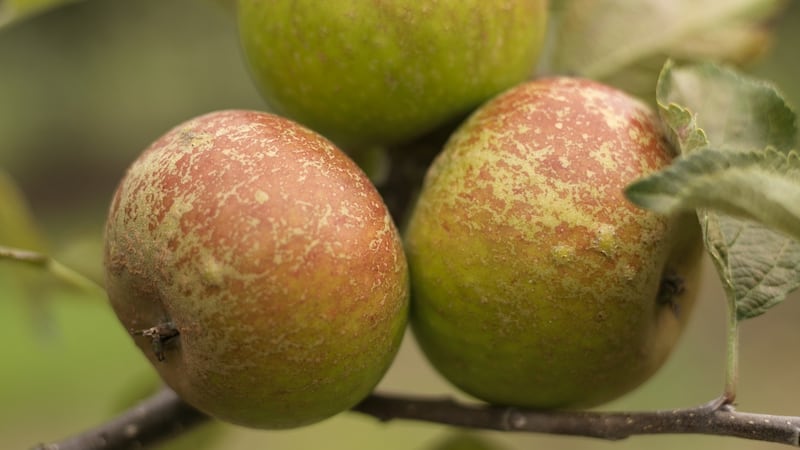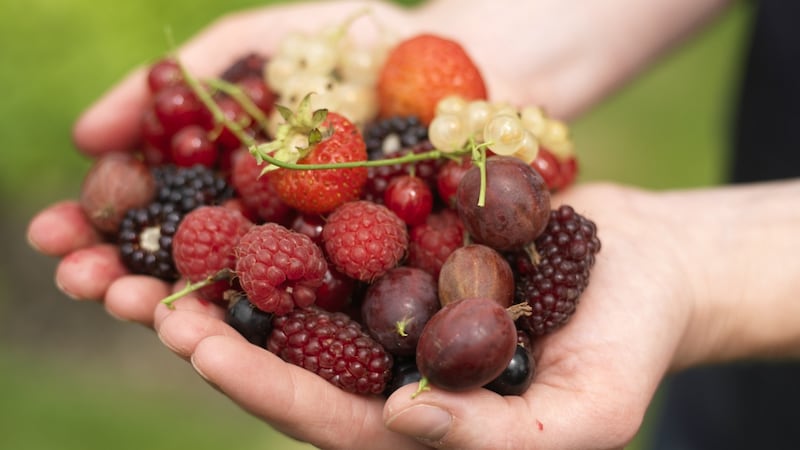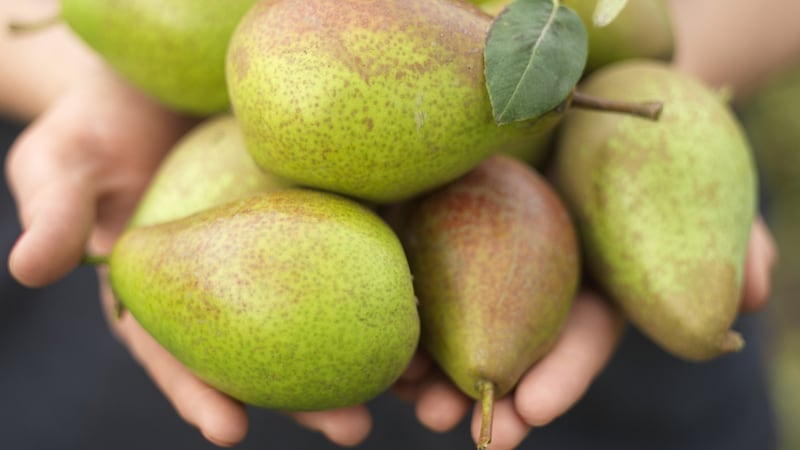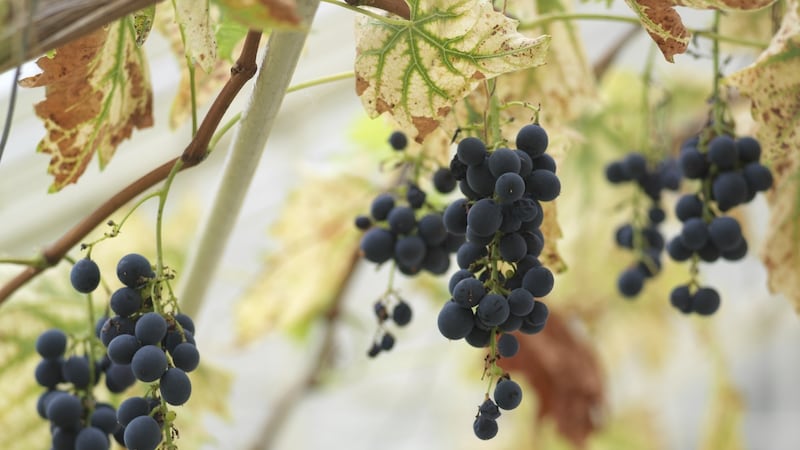In a world where supermarket shelves are piled high with a huge amount of imported produce all year round, it seems strange to think that my elderly parents’ childhoods belong to a time when fresh fruit came from people’s gardens.
Back then, seasonality was the unbendable truth by which the turning of a year was measured; a bowl of rhubarb crumble meant spring, fresh raspberries that it was high summer, homemade apple-pie that autumn had arrived, while the sweet rich smell of pears brought indoors to ripen was a sign that winter was fast approaching.
We’ve lost much of that deep-rooted connection to the land, our sense of seasonality fractured by the furious pace of modern life. But by growing even just a little of our own fruit, we can begin to appreciate it once more for what it truly is, which is something precious, delicious, and not to be wasted.
Not that I’m advocating that we all turn our lawns into orchards and grub up our flowerbeds to make way for giant fruit cages. But just one small apple tree (a self-fertile variety grafted onto a dwarfing rootstock) will give you the makings of delicious pies and crumbles for decades to come plus countless healthy snacks to fill lunchboxes.
A single blackcurrant bush will provide enough fruit to make your own jam, blackcurrant ice-cream or delicious cassis, while if you can offer it a sunny, sheltered spot and a fertile, free-draining soil, then a pear tree (again, a self-fertile variety) will provide fruit for puddings, tarts and homemade pear liqueur.
Grow your own dessert gooseberries and you’ll get to savour the sharply sweet fruit in pies, tarts and creamy gooseberry fools. Grow your own strawberries and you’ll look at those shiny, tiny, plastic supermarket cartons of half-ripe, refrigerated berries in an entirely different light.
Don’t be put off by the fact that your garden/allotment is small. Where space is tight, apple, pear, plum, cherry, greengage, damson and quince trees and currant and gooseberry bushes can be trained in a variety of ways (espaliers, fans or cordons) and grown against a sunny wall or sturdy fence or with the support of posts and/or strong horizontal wires.

Many kinds of fruit can also be grown in large tubs and containers, especially if you choose some of the ultra-compact varieties introduced by plant breeders in recent years for exactly this purpose such as Raspberry ‘Ruby Beauty’ (mrmiddleton.ie) , ‘Sibley’s Patio Quince’ (terracefruits.com) or the ‘Lilliput’ range of standard fruit trees (mrmiddleton.ie). Just make sure to use a good quality, soil-based compost and to keep plants well-fed and regularly watered during the growing season.
If you can offer it a very sunny, sheltered spot outdoors or under the protective roof of a bright polyunnel or glasshouse, then you can also grow your own fig tree, either as a wall-trained specimen or in a large pot.
The same goes for grapes, which will grow quite happily in a large container if carefully pruned/trained onto low supports into a standard, cordon or umbrella-shape and kept regularly watered and well-fed during the growing season.

Unless your garden is an exceptionally warm and sheltered one, you’ll need to bring the pot back under cover from spring until autumn to help the grapes to properly ripen (this will also protect them against birds) before moving it back outdoors in winter to ensure the vine’s root system receives the period of winter chilling that it needs.
An alternative is to plant its root-ball directly into the ground outdoors (now is the perfect time to do so), but right next to a suitable gap/hole in or beneath the frame of your glasshouse/polytunnel/conservatory so that the plant itself can be trained to grow inside/within its protective structure. Delicious dessert-grape varieties suitable for growing this way include ‘Muscat Hamburg’, ‘Lakemont’, ‘Flame’, ‘Chasselas Doré de Fontainebleau’, ‘Fragola’ and ‘Muscat of Alexandria’
Strawberries, of course, are a great choice for even the smallest sunny balcony garden (they’ll even grow happily in window boxes and hanging baskets), especially if you pick what’s known as an ever-bearing variety such as ‘Albion’, which will produce its flavoursome fruit for many months.
If grown under cover, you can extend this particular variety’s fruiting season even further. Again, as for all container-grown fruit plants, make sure to use a good quality, soil-based compost and to feed and water regularly during the growing season.

If, on the other hand, you hanker after something more exotic, then consider the Chilean guava (Ugni molinae/ Myrtus ugni), a handsome, self-fertile evergreen shrub suitable for sheltered gardens with pretty pink flowers in spring followed by deliciously sweet, sherbert-flavoured fruit that ripens in autumn.
Also known as the strawberry myrtle and a great favourite of Queen Victoria, its fruit can be used in cakes, jams, syrups, jellies, fruit salads or to make a deliciously flavoursome pink gin. It does best in a moist but free-draining soil and a sunny, sheltered spot; in colder gardens, grow it against a sunny wall or in a large pot/container that can be moved into an unheated glasshouse/polytunnel or bright porch in winter.
Other more unusual fruits that will grow in an Irish garden include the black mulberry tree (Morus nigra), the medlar tree(Mespilus germanica), the pineapple guava (Acca sellowiana, only for warm, sheltered gardens) and the shrubby plant known as honeyberry or blue honesysuckle. (Lonicera caerulea). Not always readily available in most Irish garden centres, recommended stockists include futureforests.ie ; deelish.ie and UK-based otterfarm.co.uk.
Many (not all) of the species/varieties I’ve mentioned are suitable for planting at this time of year as either bare-root or container-grown specimens but my advice, given the torrential rain of recent weeks, is to hold off doing so until soil conditions improve. That way, you can be sure that all of your hard work really bears fruit.

This Week in the Garden:
There's still time (but hurry) to sow seed of ultra-hardy varieties of broad bean such as 'Super Aquadulce' (available from seedaholic.com ), 'Purple Guatemalan' (available from brownenvelopeseeds.com) or the compact heritage variety known as 'The Sutton' (available from seedaholic.com and great for small or exposed gardens) to give you extra-early cropping plants next year.
For best results, sow the seed into root-trainers or small pots under cover of a cold frame/cloche/glasshouse/polytunnel for transplanting into their final position either outdoors or in the glasshouse polytunnel once the young seedlings have developed a strong root system. Broad beans like a fertile, moisture-retentive but free-draining soil, sturdy supports and a sheltered, sunny spot in full sun. Young plants need protection from slug damage until established.
The torrential rain of recent weeks has left many gardens sodden and the soil unworkable. To prevent the latter becoming badly compacted and waterlogged, it’s best to avoid digging or walking on lawns, beds and borders until conditions improve. When/if this is unavoidable for whatever reason, use narrow wooden boards spread on the ground to walk on; these will help to evenly distribute your weight and minimise serious damage to the soil.
Visit this:
The late artist, poet, filmmaker and political activist Derek Jarman has long been a cult figure in the world of horticulture, both for the wonderfully idiosyncratic, nature-led garden that he created on the rocky, windswept beach surrounding his home at Prospect Cottage in Dungeness in coastal Kent as well as for his revolutionary book 'Derek Jarman's Garden'.
A major retrospective of his work, 'Protest', which opened at the Irish Museum of Modern Art (IMMA) last week and continues until February 23rd, takes an in-depth look at the extraordinary life and diverse career of this remarkable man which ended with his premature death from AIDS in 1994.
The exhibition will be followed by a major monograph (to be published by Thames & Hudson in 2020) including contributions from the British gardener, illustrator and writer Jonny Bruce and the garden historian and biographer Michael Charlesworth (imma.ie)
Dates For Your Diary:
Knockrose Garden, The Scalp, Kiltiernan, Dublin 18 this weekend (Saturday 16th and Sunday 17th, 11am-4pm ) and again on Saturday 23rd and Sunday November 24th (11am-4pm) 'Connected By Nature' a group exhibition by artists Bernard van Giessen, Erica Devine, Maeve Stafford, Fionnuala Broughan and Conleth Gent, all of whose work (photography, sculpture, botanical art and botanical casts) is directly inspired by nature, see knockrose.com.
Wednesday 20th November (8pm), St Andrew's Parish Centre, Church Road, Malahide, County Dublin, Christmas Floral Decorations; 'Ideas for the Home', a demonstration by Margaret Quinn on behalf of Malahide Horticultural Society, see malahidehorticulturalsociety.com.
Also Wednesday, November 20th , Wesley house, Leeson Park, Dublin 6, 'Christmas Floral Art', demonstrations by Karen Robinson and Maria Watchorn on behalf of the RHSI, admission free to RHSI members/€10 non-members, see rhsi.ie for details.





















